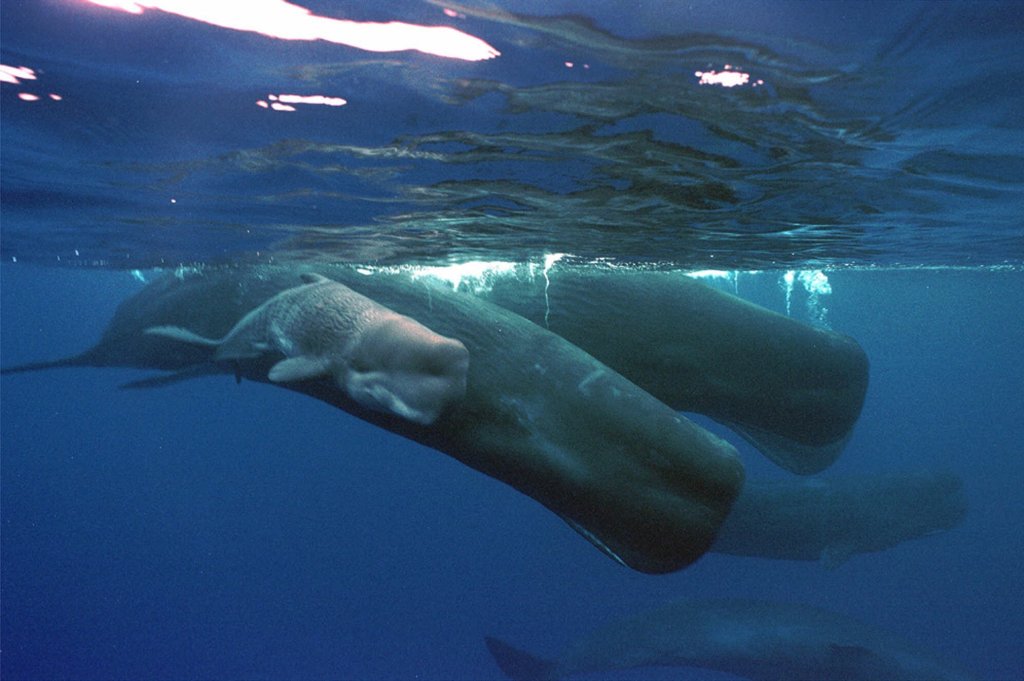MONTEREY – Hundreds of feet beneath the ocean’s surface, the planet’s largest-toothed predator hunts for prey, which could include a giant squid or even a shark.
Since the deep ocean is dark, the creature hunts by sound. It makes a series of clicks, the loudest sound produced by any animal, by forcing air through its nose and into a specialized organ. Each click lasts for a fraction of a second, their echoes are processed by its brain, which is five times larger than a human’s, to pinpoint the location of its next meal.
According to scientists at the Monterey Bay Aquarium Research Institute (MBARI), sperm whales frequent the deep waters around Monterey Bay much more than previously thought. The researchers analyzed seven years’ worth of recordings captured by an underwater microphone near Monterey Bay to see how often they heard clicks made by sperm whales.

“We actually found that these animals are here quite a bit more often than we had realized,” says Will Oestreich, a researcher from MBARI and the lead author of a study published last month in Movement Ecology, a journal that covers research on animal migration.
RELATED: Monterey Bay Aquarium: Providing otter love through surrogacy program
Since sperm whales spend most of their time deep underwater, humans rarely see them. John Ryan, a researcher at MBARI who was involved with the study, said one local whale watching boat naturalist reports seeing them around once every five years. In contrast, the underwater microphone recorded sperm whales on over one-third of the days between 2015 and 2022. MBARI placed the microphone 18 miles from the coast, 3,000 feet-deep in 2015.
This study “allows us to recognize they’re a persistent part of the biodiversity here,” he says. “We did not know that. We didn’t know it from our eyeballs.”
This finding is important for conserving sperm whales, Oestreich says. “This is an endangered population of marine mammals. If we want to protect them, we first need to understand where they are.”
Ryan says that sperm whales likely benefit from recent efforts to protect other whales on the California coast, like the Blue Whales and Blue Skies program. Although sperm whales spend most of their time deep underwater, they occasionally take 10-15 minute naps near the surface, making them especially vulnerable to ship strikes. The program has reduced the chances of a fatal ship strike on California’s whales by 58%.

Oestreich and colleagues also found that the number of sperm whales off the coast of the Monterey Peninsula varies throughout the year. They identified the source of this variation by comparing the frequency of sperm whale noises to the location of a food-rich region called the North Pacific Transition Zone. This area moves throughout the year and many surface-dwelling ocean predators follow it.
The researchers found that sperm whales are most abundant around Monterey Bay when the North Pacific Transition Zone is here. While they do not follow it as closely as surface-dwelling creatures, it provides strong evidence that sperm whales migrate seasonally. This has powerful implications for our understanding of the deep ocean.


















































